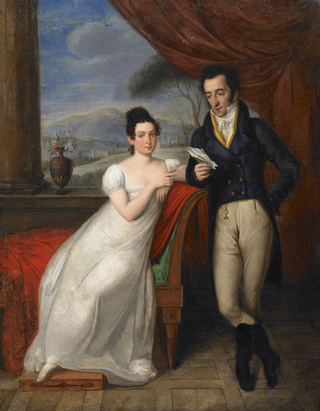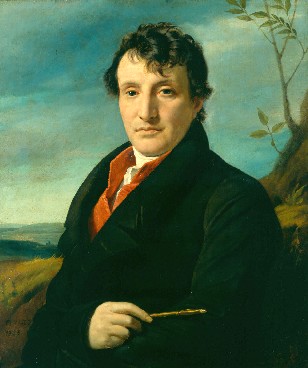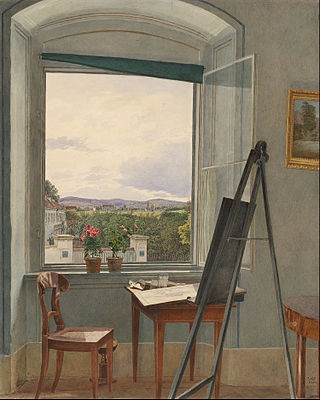
Jozef Israëls was a Dutch painter. He was a leading member of the group of landscape painters referred to as the Hague School and was, during his lifetime, "the most respected Dutch artist of the second half of the nineteenth century."

George Peter Alexander Healy was an American portrait painter. He was one of the most prolific and popular painters of his day, and his sitters included many of the eminent personages of his time. Born in Boston, he studied in Europe, and over his lifetime had studios in Paris and Chicago.

Vincenzo Camuccini was an Italian painter of Neoclassic histories and religious paintings. He was considered the premier academic painter of his time in Rome.

Giuseppe Borsato was an Italian painter, primarily of vedute. Known for his work as the architect, decorator, and painter to the French Imperial Court in Venice.

Antonio Barbalonga or Barbalunga, also called Antonio Alberti, was an Italian painter of the Baroque period.

Wedding Painter is the conventional name for an ancient Greek vase painter active in Athens from circa 480 to 460 BC. He painted in the red-figure technique. His name vase is a pyxis in the Louvre depicting the wedding of Thetis and Peleus.

Henri Van Assche was a Belgian painter; primarily of landscapes. He was especially well-known for his depictions of waterfalls and water mills. Some of his scenes contain animals painted by Balthasar Paul Ommeganck.
Jacob Xavery was a Dutch painter.

William Yellowlees was a Scottish painter. He came to Edinburgh in 1812, and studied there under William Shiels, the animal painter. He began practice as a portrait painter and soon became popular, winning the sobriquet of "the little Raeburn", partly by the small size, but more by the excellence of his work. He painted in Edinburgh for about fifteen years, and then moved to London, where he met with much success. Prince Albert was among his patrons. He contributed twenty portraits to the Royal Academy between 1829 and 1845. There is a portrait by him in the Scottish National Portrait Gallery. This self-portrait was identified by a descendant of William Yellowlees, Scottish psychiatrist and musician Alexander John Yellowlees, in the 1970s whilst attending medical school in Edinburgh.

Jakob Alt was a German painter and lithographer.

Hugh Barron was an English portrait painter and amateur musician.

Richard Lauchert, a German portrait painter, was born at Sigmaringen in 1823. He studied at Munich in 1839, went for improvement to Paris in 1845, and settled at Berlin in 1860. He was mostly employed by the courts of Germany, England, and Russia, and painted portraits with great taste and ability, but many of his earlier productions are inferior to those of his later period. He died at Berlin in 1868.
Peter Paul Benazech was an English engraver.

Hendrik Scheffer was a Dutch painter in the Romantic tradition who lived in France for most of his life. In France he is usually known as Henri Scheffer.
Benjamin Calau (1724–1785) was a German portrait painter, who used an encaustic technique.

James John Wilson Carmichael, also known as John Carmichael was a British marine painter.
Nicholas Thomas Dall was a native of Scandinavia who settled in London as a landscape painter in about 1760. He painted scenes for the Covent Garden Theatre, though his engagements in that branch of art prevented him from painting many pictures. In 1768 he obtained the first premium given by the Society for the Encouragement of Arts for the best landscape. He was chosen an Associate of the Royal Academy in 1771, and died in London.

Louis de Moni was an 18th-century genre painter from the Northern Netherlands.
James Durno (c.1745–1795) was a British historical painter who spent most of his career in Rome.
James Green (1771–1834) was an English artist, known as a portrait-painter.














